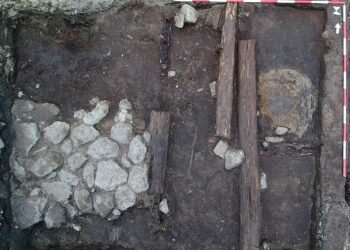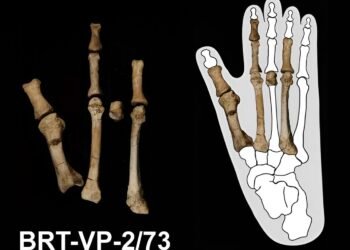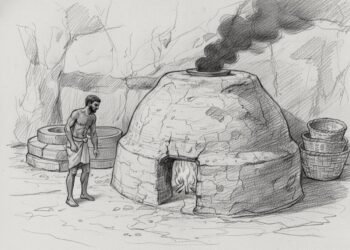A recent study has uncovered compelling evidence of close relative mating among the elite classes in precontact Mexico.

Located in the northern Mexican state of Chihuahua, Paquimé, also known as Casas Grandes, was a significant political and ritual hub of the Mogollon culture during the 13th and 14th centuries CE. This new research, led by Dr. Jakob Sedig from Chronicle Heritage and Harvard University, offers critical insights into the social hierarchy and biological relationships within this enigmatic society.
The study, published in the journal Antiquity, centers on the DNA analysis of a young child’s burial found in the “House of the Well,” a structure thought to be the ceremonial heart of Paquimé due to its association with a sacred underground well and the valuable ritual objects discovered within it. The child, who was estimated to be between two and five years old at the time of death, is believed to have been a victim of ritual sacrifice, a practice deeply rooted in many ancient Mesoamerican cultures.
DNA analysis revealed that the child had unusually long “runs of homozygosity” (RoH), a genetic marker indicating that his parents were very closely related, more so than first cousins. “This individual has one of the highest runs of homozygosity values of all published ancient individuals in the Western Hemisphere,” noted Dr. Sedig. This finding suggests that the child’s parents could have been siblings or close kin, a practice that, while taboo in most societies, was likely permitted among the elite of Paquimé to maintain power within specific lineages.

The fact that the remains were found in the House of the Well indicates that the child was part of an elite lineage, reinforcing the idea that elite families may have engaged in close-kin relationships to preserve their social and political status. The researchers propose that the sacrificial act was not only a religious offering but also a powerful statement of social consolidation, intended to consecrate the building and elevate the family’s standing within the community.
The burial was first excavated during a project in the late 1950s and 1960s, but the recent genetic analysis is the first of its kind on these remains. Earlier interpretations of the burial had already suggested the possibility of ritual sacrifice, but the new genetic evidence provides a more detailed understanding of the social and familial dynamics at play.
This discovery opens the door to further investigations into the social structures of ancient Mexican societies. The team plans to continue analyzing DNA from Paquimé and neighboring regions to build a more comprehensive picture of how these groups interacted, migrated, and intermarried over time.
While the exact role of child sacrifice in Paquimé’s broader societal framework remains somewhat unclear, it is evident that such rituals were integral to the community’s spiritual and social life. The findings contribute to our broader understanding of the complex and often stark realities of power dynamics in ancient cultures, where the pursuit of social and political dominance could lead to practices that were otherwise considered taboo.
























What methodologies were employed in the DNA analysis to provide insights into the child’s burial and its significance?